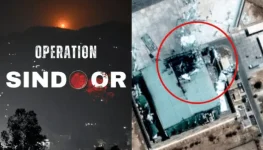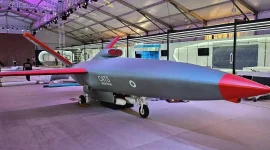
A surge in terrorist activities in the Jammu region has exposed vulnerabilities in counter-terrorism operations, primarily attributed to insufficient human and signal intelligence. Terrorists, proficient in military tactics, are exploiting the low troop density resulting from the redeployment of forces to the China front.
A series of high-level security meetings, including a Cabinet committee on security, have assessed the escalating threat south of the Pir Panjal range. In response, the government is deploying additional Army and central forces, along with technological assets, to stabilize the volatile situation.
However, officials acknowledge that achieving stability will take time due to the vast and challenging terrain, encompassing mountains, jungles, caves, and hidden refuges.
Approximately 35-40 battle-hardened terrorists, primarily of Pakistani origin and affiliated with Jaish-e-Muhammed, are operating in small teams within the Jammu region.
Armed with modern weaponry, ammunition, and encrypted communication devices, they have inflicted significant setbacks on the Army, launching six to seven attacks this year alone. The most recent attack in Doda resulted in the deaths of four soldiers, including a Captain.
Since 2021, security forces, including the Army, have suffered around 125 casualties in Jammu and Kashmir, with at least 52 occurring in the Jammu region. This shift in focus from the Kashmir Valley to Jammu is evident in the geographical expansion of terrorist activities beyond the border districts of Rajouri and Poonch to areas like Reasi, Doda, Bhaderwah, Kathua, and Udhampur.
The redeployment of specialized counter-insurgency troops, including the Rashtriya Rifles, from Jammu to eastern Ladakh following Chinese incursions in 2020 has created a significant operational and intelligence vacuum.
The lack of reliable human intelligence (HUMINT) from locals and other sources has hampered counter-insurgency efforts, as building such networks takes time and sustained effort.
Adding to the challenge, many terrorists have adopted sophisticated ultra-sets and encrypted communication equipment, making interception difficult. This lack of credible HUMINT, coupled with the relative absence of signal intelligence (SIGINT), further complicates counter-terrorism operations.
Additionally, local political dynamics have alienated certain communities, like the Gujjars and Bakarwals, who traditionally served as informants for security forces. Pakistan is exploiting this alienation, maintaining its terrorist training infrastructure within its territory and Pakistan-occupied Kashmir (PoK).
The situation in Jammu underscores the critical need for robust intelligence gathering and community engagement to effectively counter the evolving terrorist threat.




